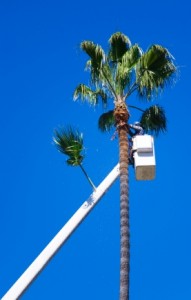Quoting
an expert about the damage toilet paper can do is difficult--multiple toilet
paper manufacturers decline to admit that their product could be employed in
any way other than its noble, intended use--and even landscape contractors grow
cagey when offering advice. "Get out what you can before it rains,"
recommends a representative of Country South Landscape Service in Atlanta, Ga.
Would one use a rake to do this job? "Yeah, or a long pole. There's no
special way of doing it, just get it," he says. When asked to identify
himself, the man hung up.
Toilet
paper victims are more willing to speak on the record. A friend woke to find
his parents' lawn "rolled" on a few occasions in the late 90s. If you
just start yanking on it, it tears, and then you have all these little pieces
up there. To get those bits down, The best way I found was to basically take a
pool cue, tie a candle to the end of it, and reach up with the flame to light
the strands on fire. She cautions against using this method on branches near
the house and power lines, but adds that the way the toilet paper burns, it's
probably not going to catch anything on fire. And the ash is so tiny, you don't
even have to clean that up.
For
homeowners wary of lighting trees ablaze and also a little tentative about
scaling a ladder with a rake, there's always the old hose and nozzle. Though it
contradicts the advice of landscaper No. 1, water can be used to get down
errant strands, says a third landscaper, Using a nozzle set to a concentrated
beam, "just spray portions where the toilet paper connects with the limb
"It'll fall off, theoretically."
Egg,
Pumpkin, Or Paint On The House
Take
the egg, for instance. First, sponging cool water onto the front and back of
the stain, allowing water to soak in and "loosen the egg. Next, gently
scrub the egg with a soft nylon brush, adding as a cleaning agent a
solvent-free, protein-based stain remover like Clorox Stain-Out.
If that
fails, mixing 1 teaspoon of a mild pH-balanced detergent (nonalkaline,
nonbleaching) with a cup of lukewarm water and blotting the spot. Then, mix 1
tablespoon of household ammonia with a half-cup of water and blot the spot
again. Sponge it with clean water, then dry with a clean cloth. "Always
test these cleaners on an inconspicuous area," to make sure the surface
won't be further damaged when the cleaner is applied.
Cleaning
off paint, such as graffiti is a bit trickier, but Motsenbocker has a Lift-Off
product formulated for that as well. This item, No. 4, "doesn't
distinguish between types of paint," says Motsenbocker's Patty Ducey-Brooks,
so prepare to repaint the entire area. Many types of solvents can remove
paint--lacquer thinners, industrial degreasers, our old pal methylene
chloride--but this product merits a specific mention because it's water-based,
biodegradeable, and generally easier to deal with than stronger chemicals.
Unlike a solvent, which melds with the paint as it works, the Motsenbocker
formula breaks the molecular bond between the surface and the paint, producing
a solid paint chip that flakes off, to be thrown away.
Some
light-colored paint or ink graffiti can be concealed by simply priming and
painting over the damage. Porous brick and concrete often need the
pressure-washer treatment. Pasquill of the Anti-Vandalism committee, whose
paint crew has "vast experience" cleaning acts of graffiti, says
"it can get fairly complicated, depending on the material or
substrate." Pasquill does have one universal recommendation,
though--"clean it quickly."
It
doesn’t matter to us whether you want commercial desert landscaping, lush lawns
or some type of landscaping in between, we can help. We serve businesses like yours all over the
Phoenix Metro Area. To find out how give us a call at 623-848-8277.
Presented
By:
Greens
Keeper Landscape Maintenance, LLC
623-848-8277
















